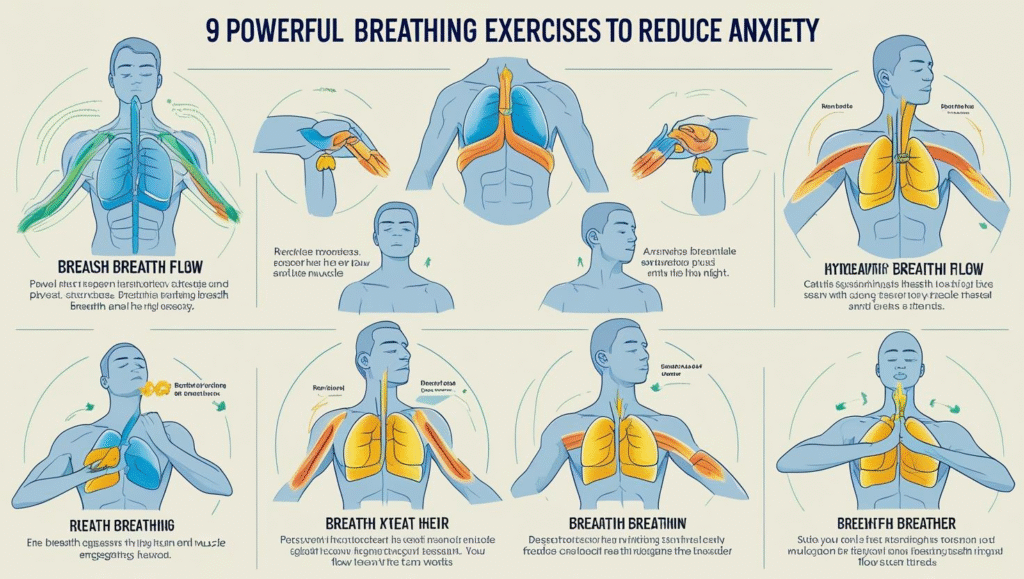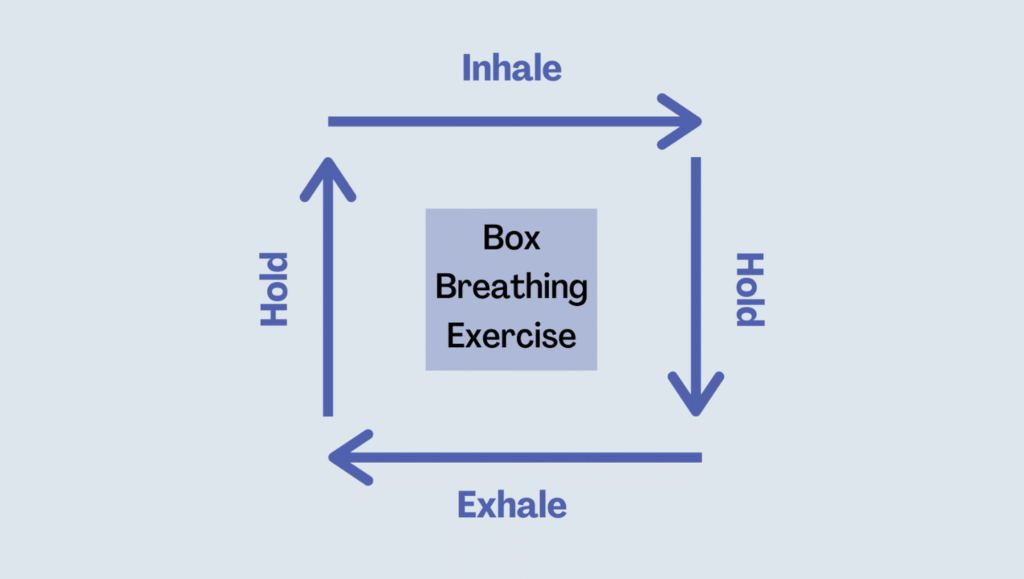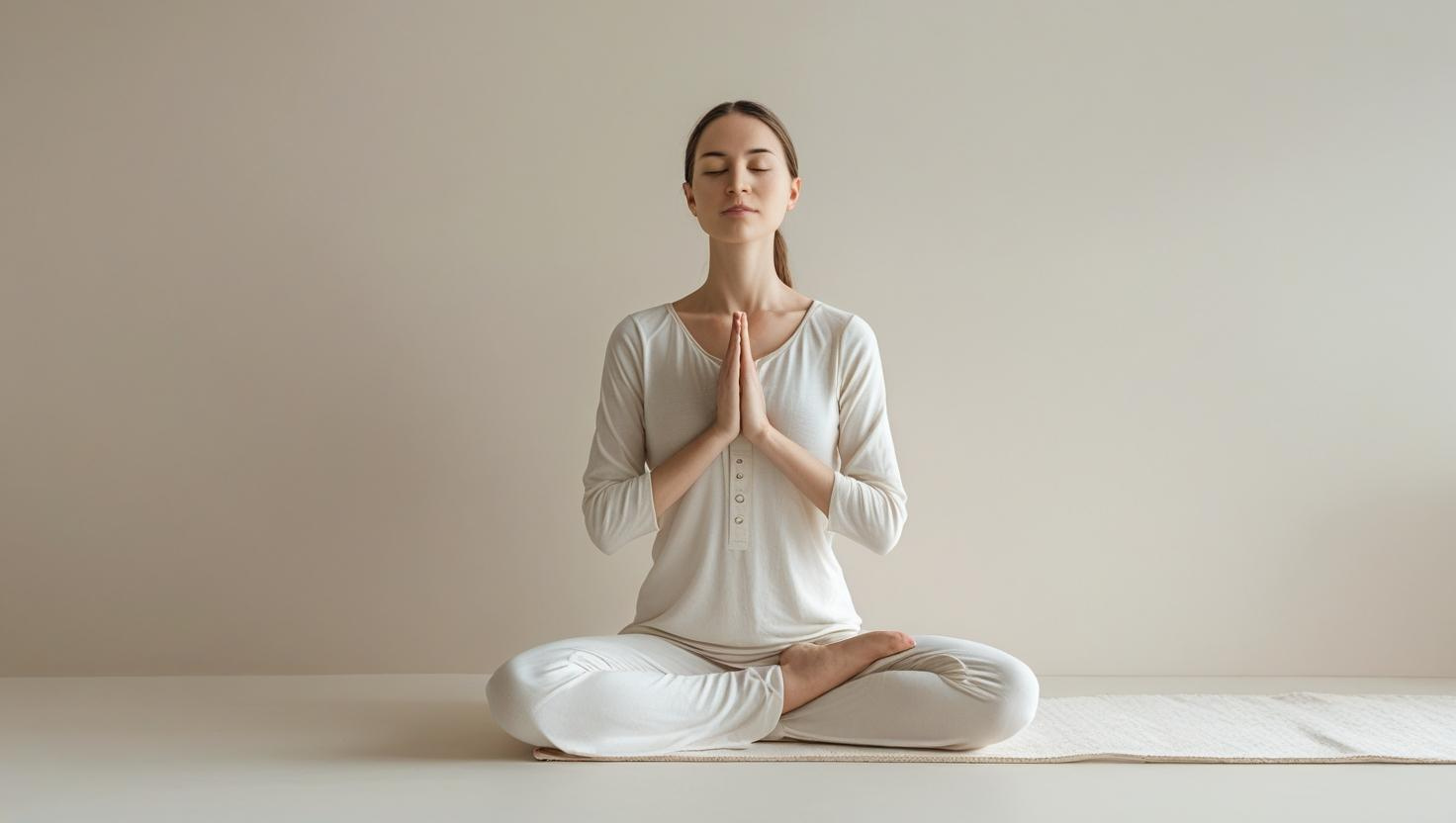Feeling anxious, restless, or overwhelmed? You’re not alone. Millions of people in the U.S. struggle with anxiety daily. But did you know your breath holds the key to calm? This article explores the six best breathing techniques for anxiety and stress relief—proven methods that can help you manage panic, reduce tension, and feel grounded.
From deep breathing exercises to controlled breathing and mindful breathing, these methods activate your parasympathetic nervous system, helping to restore your body’s balance and equilibrium. Whether you’re new to breathwork or seeking advanced tools, these relaxation techniques are not only safe and natural but also easy to incorporate into your daily routine today, empowering you to take control of your anxiety and stress.
What Is Breathwork and How Does It Help with Anxiety
Breathwork, a term used to describe the practice of consciously changing your breathing patterns, is the focus of this guide. Unlike automatic breathing, this involves deep, intentional breath control. By learning to breathe slowly and deeply, you can shift your body out of fight-or-flight mode. This activates your natural tranquilizer for the nervous system and sends signals of safety to your brain.
Research shows that breath-based therapy, backed by scientific evidence, can help reduce symptoms of Anxiety and stress. It improves focus, lowers blood pressure, and creates a sense of emotional balance. Many people use yoga breathing techniques, such as Vishnu mudra breathing and mindful breathing, to regain control when they feel overwhelmed. This scientific backing should instill confidence in the effectiveness of these techniques.
How Breathing Exercises Relieve Stress and Panic Attacks
During a panic attack, your body enters a state of stress. Your heart races, your breath becomes fast and shallow, and your mind spirals. Shallow breathing and Anxiety feed each other. Learning how to breathe correctly when anxious interrupts that loop, providing immediate relief, giving you hope and reassurance that you can regain control.
Controlled breathing stimulates your parasympathetic nervous system, which helps calm the stress response system. This slows your heart rate, balances oxygen and carbon dioxide levels, and alleviates physical symptoms. Many find that breathing exercises for panic attacks are as helpful as medication when done regularly.
9 Powerful Breathing Exercises to Reduce Anxiety

The exercises below are science-backed and easy to learn. They combine deep breathing exercises, mental health practices, breath control, and visualization with breathwork to help you feel grounded and calm.
Breathing Exercise Best For Time Needed
Alternate-Nostril Breathing Balancing energy 2-5 mins
Belly Breathing Daily calm 3-10 mins
Box Breathing, Emotional control, 5 mins
4-7-8 Breathing Stress + sleep 1-3 mins
Lion’s Breath Tension release 1 min
Mindfulness Breathing Focus & clarity Any time
Pursed-Lip Breathing Lung health 2-3 mins
Resonance Breathing Deep, calm 5-10 mins
Simple Diaphragmatic Breathing: All-day use, Ongoing
1. Alternate-Nostril Breathing (Nadi Shodhana)
The alternate-nostril breathing technique involves closing one nostril at a time while breathing through the other. This balances the body and clears the mind. It’s part of yoga breathing practices and is often paired with Vishnu mudra breathing for best results.
This method is known to reduce cortisol, the stress hormone. It improves breath awareness, calms the mind, and regulates energy levels. It’s a great starting point for anyone interested in safe breathing techniques, grounding, and breath connection.
2. Belly Breathing (Abdominal or Diaphragmatic Breathing)
Also known as diaphragmatic breathing, this technique utilizes the belly instead of the chest. To begin, place one hand on your stomach. As you inhale, feel your belly rise. As you exhale, feel it fall. These are the steps for belly breathing.
Belly breathing for Anxiety increases oxygen flow, slows your heart, and relaxes your abdominal muscles. It also supports lung-friendly breathing and helps reduce physical signs of shallow breathing. Practicing daily builds a foundation for calm.
3. Box Breathing (Square Breathing)

Box breathing, a simple method used by Navy SEALs, is a technique for emotional control. Inhale for four seconds, hold for four, exhale for four, hold again for four. This creates balance and control. These are the box breathing steps.
It supports heart rate control through breath and helps clear mental chatter during breath exercises. Many use it before public speaking or in high-stress jobs. It’s also one of the best breathing exercises for work stress.
4. 4-7-8 Breathing Technique
The 4-7-8 breathing method for stress relief consists of four seconds of inhalation, seven seconds of holding, and eight seconds of exhalation. This slows down the body’s systems and invites a deep sense of calm. It can be used at any time, especially before bedtime.
This technique works like a natural tranquilizer for the nervous system. It improves oxygen-carbon dioxide exchange and reduces blood pressure. It’s perfect for those seeking deep breathing for sleep or struggling with insomnia.
5. Lion’s Breath (Simhasana)
This expressive method involves inhaling through the nose, then opening your mouth wide and exhaling with a loud “ha” sound while sticking your tongue out. These are the Lion’s Breath instructions.
Lion’s breath benefits include tension release from the face, neck, and jaw. It improves mood, boosts energy, and acts as a quick relaxation response through breath. It’s ideal for releasing pent-up stress.
6. Mindfulness Breathing
This is a simple yet powerful mindfulness breathing practice. Concentrate on the breath. Pay attention to the inhale, pause, and exhale. Bring your thoughts back to the task at hand if they stray.
This technique increases breath awareness training and helps reduce mental chatter during breath exercises. It also promotes nervous system relaxation and builds inner peace. Use it anytime during the day.
7. Pursed-Lip Breathing
The pursed-lip breathing method slows exhalation and improves airflow. Breathe in through your nose and out through your pursed lips, as if blowing out a candle. These are the steps for using pursed-lip breathing.
It’s often taught as a COPD breathing exercise, but it’s excellent for Anxiety, too. It supports proper oxygen-carbon dioxide exchange, aids in lung-friendly breathing, and helps in calming the nervous system.
8. Resonance Breathing (Coherent Breathing)
This method aims for 5-6 breaths per minute. Inhale for 5-6 seconds and exhale for the same length. Resonance breathing for calm harmonizes heart rate and nervous system rhythms.
It lowers stress, promotes healthy breathing for mental well-being, and is backed by scientific research. Practicing regularly supports holistic anxiety treatment and can improve emotional resilience over time.
9. Simple Diaphragmatic Breathing Exercise
This is a gentle technique that focuses on slow, even breaths from the belly. It can be done seated or lying down. It’s easy to include in your daily breathwork routine.
This method helps train your body to breathe effectively during Anxiety or panic. It reduces over-breathing, helps control the fight-or-flight response breathing, and supports safe breathing techniques.
Cheat Breathing vs. Abdominal Breathing – What’s the Difference?
ChestCheating breathing is characterized by fast, shallow chest breathing. It activates stress. Abdominal breathing, on the other hand, involves deeper breaths from the belly, which promotes calm.
Here is a comparison table:
TypeAreaEffect
Cheat Breathing Chest Triggers stress
Abdominal Breathing, Belly Encourages calm
Recognizing the distinction between belly and chest breathing helps you identify your breathing patterns and choose the most effective stress reduction strategies.
How to Build a Daily Breathwork Routine
Start small. Choose one method, like 4-7-8 breathing or box breathing. Practice at the same time daily to build a habit. Pair it with another routine, such as brushing your teeth or making coffee.
Creating a breathwork routine also involves finding a quiet space, using apps or timers, and journaling about your feelings afterward. These are key tips for practicing breathwork daily and maintaining it over the long term.
Breathwork Safety: Tips and Risks to Keep in Mind
Breathwork is safe for most people. However, if you have a heart condition, asthma, or dizziness, consult a doctor first. Avoid over-breathing or pushing too hard.
These are some key risks and precautions for breathwork. If you feel tingling, lightheadedness, or discomfort, stop and return to normal breathing. Choose slow breathing techniques for stress over intense styles.
5 Bonus Exercises for Anxiety Relief (Physical + Breath-Linked)
To go deeper, combine breathing with movement. Try gentle yoga stretches, humming breath benefits like Bhramari pranayama, or using sensory grounding to reduce Anxiety. Movement with breath enhances results.
Physical practices like walking meditation, progressive muscle relaxation, or cold face splashing can reset the nervous system and increase the power of natural ways to calm Anxiety.
Other Natural Ways to Cope With Stress and Anxiety
While breathwork is powerful, other holistic stress management tools also offer support. Consider journaling, herbal teas, aromatherapy, mindfulness apps, and social connection as options for relaxation. They support your system in staying balanced.
Natural remedies for Anxiety, such as magnesium-rich foods or outdoor walks, also complement breathwork. When used together, they help build long-term emotional health.
When to Seek Help: Therapy and Professional Treatments
If Anxiety interferes with daily life, it may be time to talk to a professional. Therapy, like CBT or EMDR, can help you understand your triggers and patterns.
If you’ve tried breathing exercises and emotional release, but still feel stuck, don’t hesitate. You deserve help. Therapists can also guide you on how to breathe during panic attacks and teach breathing for mental health.
Frequently Asked Questions
1. What is the best breathing technique for anxiety?
There’s no single best method, but the 4-7-8 breathing pattern and box breathing steps are among the most effective for quickly calming anxiety. These techniques help regulate breathing patterns, activate the parasympathetic nervous system, and offer immediate anxiety relief breathing.
2. How often should I practice breathing exercises?
To reap long-term benefits, try practicing breathwork even when you’re calm. Aim for at least 5–10 minutes of daily practice. Establishing a daily breathwork routine helps build resilience and enables you to respond more effectively during anxious moments.
3. Can breathing exercises replace therapy or medication?
While breath-based therapy can reduce symptoms, it’s best used as part of a holistic anxiety treatment plan. If your anxiety is severe, talk to a mental health professional. Safe breathing techniques can complement therapy, not replace it.
4. What are the physical signs of shallow breathing?
You may notice chest tightness, frequent yawning, or lightheadedness. These are physical signs of shallow breathing, which can worsen anxiety. Learning the difference between chest and belly breathing helps correct this habit.
5. Is breathwork safe for everyone?
Most people can practice controlled breathing safely and effectively. However, if you have heart or lung conditions, consult your doctor first. Be aware of the risks and precautions associated with breathwork, particularly when using techniques that involve breath retention or rapid breathing.
6. Can breathing reduce cortisol levels and blood pressure?
Yes! Studies show that breath control techniques, such as resonance breathing for calmness and belly breathing for anxiety, can lower cortisol levels and support blood pressure reduction techniques, promoting overall wellness.
Welcome to Depthoverdrive,
I’m Syeda Naqvi, a passionate SEO content writer with 3 years of experience in crafting engaging, optimized, and reader-friendly content. I specialize in creating content that not only ranks on search engines but also provides real value to readers, with a strong understanding of keyword research, on-page SEO, and content strategy.

